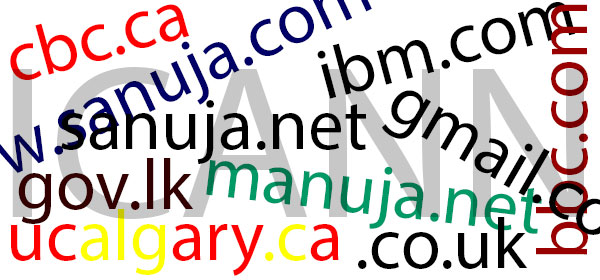
Kings and Queens of TLDs
The TLD, dot-com is the most popular and recognized domain extension today. It was one of the few pioneer extensions created by the Americans along with the dot-net, dot-org and few others in 1985. Hence by default, it is the most valued domain extension on the market. Almost all large multinational companies have at least one dot-com for their domains regardless of their parent country. The ibm.com, bbc.com and wikipedia.com are few examples of dot-com giants. Some of these organizations do not use the dot-com for their primary domain, but rather they use them for redirecting their users. The wikipedia.com is currently not used for hosting, but used as a redirection to wikipedia.org. The bbc.com on the other hand use their dot-com for global media site while using ego-detection to redirect their UK viewers to www.bbc.co.uk.
Magnifying the Problem
Recently some “experts” argued the solution is the open up more TLDs. Even in that group of “experts”, I have come across people who don’t see eye to eye. Some believe that only generic TLDs would resolve the issues while others argue, there is nothing wrong with using country specific TLDs. Personally, I support the generic TLDs because by regulations of the ICANN, the country specific domains can be subjected to higher regulations. The best example is the dot-ca domain names, which are governed by the Canadian registrar. Let’s say you create a anti-government website using a dot-ca domain, what are the possibilities your website would be allow to use the dot-ca forever? There is no safety new in dot-coms either and we have learned this through the legal battles of thepiratebay.org.
A vulnerability of country specific and new domain extensions is that it can be problematic for your mobile customers. Android and Apple mobile devices are famous for their auto correct keyboards. The downside for the webmasters is to get your audience to your website. However, I found these automated prediction keyboards not only comes with a dedicated .com button, but also it can hinders the user’s ability to type out a web address that does not contain dot-com. I tried to type sanuja.net, but on my Android device, it was corrected to sanuja.com. I can recall few different times when I try to access the University of Calgary website, ucalgary.ca, I end up with an error message because the phone automatically corrected my dot-ca to dot-com. It is not just an inconvenience if you have a web business with “unconventional” domain extensions.
If the technology catch up to the new TLDs, these small issues adds up creating more problems for web developers and organizations. This is why I think dot-com is still the king of the domains world.
